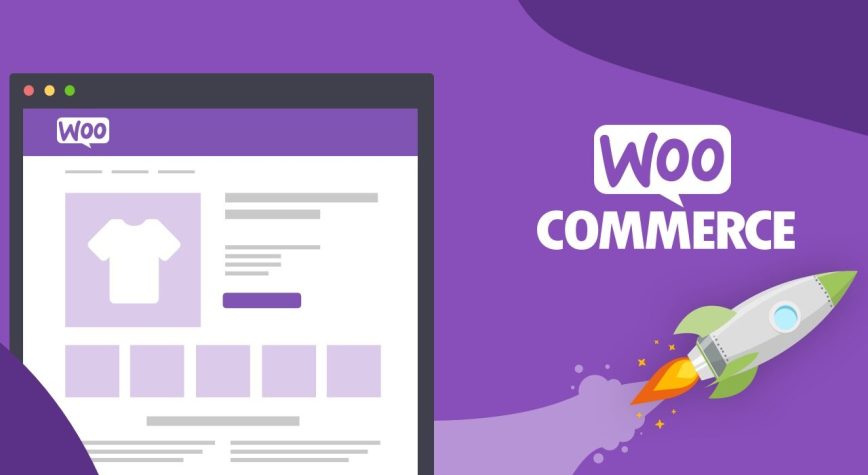Make Money with WooCommerce – Are you looking to start an online business and make money? If so, WooCommerce could be the perfect platform for you. In this article, we’ll explore how you can leverage WooCommerce, a powerful e-commerce plugin for WordPress, to build a profitable online store. Whether you’re an entrepreneur, a small business owner, or a creative individual wanting to monetize your passion, WooCommerce provides the tools and flexibility you need to succeed. So, let’s dive in and discover how you can make money with WooCommerce.
1. Introduction
In the digital era, e-commerce has become a thriving industry, and creating an online store has never been easier. WooCommerce, an open-source plugin designed for WordPress, enables you to transform your website into a fully functional online store. With its user-friendly interface, extensive features, and customizable options, WooCommerce empowers entrepreneurs to sell products and services online, reaching a global customer base.
2. What is WooCommerce?
WooCommerce is a free WordPress plugin that adds e-commerce functionality to your website. It provides seamless integration with WordPress, allowing you to manage your online store alongside your website’s content. With WooCommerce, you have complete control over your store’s design, inventory, and customer experience. Whether you’re selling physical products, digital downloads, or services, WooCommerce caters to a wide range of business models.
3. Benefits of Using WooCommerce
3.1 Easy Setup and Customization
One of the key advantages of WooCommerce is its simplicity and ease of use. You can set up your online store quickly, even if you have limited technical expertise. WooCommerce provides intuitive tools and a user-friendly interface, enabling you to customize your store’s appearance, layout, and functionality without requiring extensive coding knowledge.
3.2 Extensive E-commerce Functionality
WooCommerce offers a comprehensive set of features to manage every aspect of your online store. From product management and inventory tracking to customer reviews and order processing, WooCommerce provides a robust foundation for running a successful e-commerce business. Additionally, it supports various payment gateways and shipping methods, giving you flexibility in how you handle transactions.
3.3 Wide Range of Extensions and Add-ons
To further enhance your store’s functionality, WooCommerce offers a vast library of extensions and add-ons. These plugins allow you to integrate with popular payment gateways, offer advanced shipping options, implement marketing automation, and much more. With the wide selection of extensions available, you can tailor your store to meet your specific business needs and scale as you grow.
4. Setting Up a WooCommerce Store
Before you can start making money with WooCommerce, you need to set up your online store. Let’s walk through the essential steps to get your store up and running.
4.1 Choosing a Hosting Provider
To ensure your WooCommerce store performs well and provides a seamless shopping experience, selecting a reliable hosting provider is crucial. Look for a hosting provider that offers excellent uptime, fast loading speeds, and reliable customer support.
4.2 Installing WordPress and WooCommerce
Once you have a hosting provider, you’ll need to install WordPress and the WooCommerce plugin. Most hosting providers offer one-click installations for WordPress, making the setup process quick and hassle-free. After installing WordPress, you can easily add the WooCommerce plugin from the WordPress dashboard.
4.3 Selecting and Customizing a Theme
Next, choose a visually appealing and responsive theme for your store. There are numerous WooCommerce-compatible themes available, both free and premium. Select a theme that aligns with your brand and offers the features you need. Customize the theme to match your store’s design and create a unique shopping experience for your customers.
4.4 Adding Products and Categories
Now it’s time to populate your store with products. Add product listings, including high-quality images, detailed descriptions, and pricing information. Organize your products into relevant categories and subcategories, making it easier for customers to browse and find what they’re looking for. Remember to optimize your product pages with relevant keywords to improve their visibility in search engine results.
5. Optimizing Your WooCommerce Store for Search Engines
To attract organic traffic and maximize your store’s visibility in search engine results, it’s crucial to optimize your WooCommerce store for search engines. Here are some key strategies:
5.1 Conducting Keyword Research
Research and identify relevant keywords that align with your products and target audience. Use keyword research tools to discover high-volume and low-competition keywords that can help drive organic traffic to your store.
5.2 Optimizing Product Pages for SEO
Optimize your product pages by including relevant keywords in titles, headings, meta descriptions, and product descriptions. Ensure that your URLs are concise and include keywords. Additionally, optimize your images by adding alt text that describes the image accurately.
5.3 Writing Unique and Compelling Product Descriptions
Craft unique and persuasive product descriptions that highlight the key features, benefits, and value propositions of each product. Avoid duplicate content and provide detailed information that helps customers make informed purchasing decisions.
5.4 Optimizing Site Speed and Performance
Page loading speed is a critical factor in user experience and search engine rankings. Optimize your WooCommerce store for speed by using caching plugins, compressing images, and minimizing CSS and JavaScript files. Regularly monitor and optimize your site’s performance to provide a seamless shopping experience.
6. Promoting Your WooCommerce Store
To drive traffic and generate sales, you need to implement effective marketing strategies for your WooCommerce store. Here are some key promotional methods:
6.1 Utilizing Social Media Marketing
Leverage popular social media platforms to promote your products, engage with your audience, and build brand awareness. Create compelling content, run targeted ads, and collaborate with influencers to expand your reach and attract potential customers.
6.2 Running Paid Advertising Campaigns
Consider running paid advertising campaigns on platforms like Google Ads and Facebook Ads to increase your store’s visibility and drive targeted traffic. Set clear goals, define your target audience, and optimize your ad campaigns to maximize conversions and ROI.
6.3 Implementing Email Marketing Strategies
Build an email list of interested prospects and existing customers. Use email marketing to send personalized product recommendations, exclusive offers, and relevant content to nurture customer relationships and drive repeat purchases.
6.4 Leveraging Content Marketing
Create valuable and engaging content related to your products or industry. Publish blog posts, how-to guides, and informative videos that showcase your expertise and provide value to your audience. Optimize your content for SEO to attract organic traffic and establish your store as an authoritative source.
7. Enhancing User Experience and Conversions
To maximize conversions and retain customers, it’s essential to focus on enhancing user experience. Here are some key strategies:
7.1 Implementing a Mobile-Friendly Design
With the increasing use of mobile devices for online shopping, ensure that your WooCommerce store is mobile-responsive and provides a seamless browsing and purchasing experience across different screen sizes.
7.2 Simplifying the Checkout Process
Streamline the checkout process by minimizing the number of steps required and eliminating unnecessary form fields. Offer guest checkout options and provide clear instructions to avoid cart abandonment.
7.3 Offering Multiple Payment Options
Cater to the preferences of your customers by offering a variety of payment options, such as credit cards, PayPal, and digital wallets. Implement secure payment gateways to instill trust and confidence in your customers.
7.4 Incorporating Product Reviews and Ratings
Display customer reviews and ratings on your product pages to build trust and credibility. Encourage satisfied customers to leave reviews and respond promptly to any feedback or concerns.
8. Managing Inventory and Fulfillment
Efficient inventory management and order fulfillment are vital for a successful e-commerce store. Consider the following practices:
8.1 Inventory Management Best Practices
Implement inventory management systems or plugins that help you track stock levels, set up automatic low-stock notifications, and manage product variants effectively. Regularly audit your inventory to avoid overselling or stockouts.
8.2 Integrating with Shipping Carriers
Integrate your WooCommerce store with shipping carriers to offer accurate shipping rates, print shipping labels, and provide real-time tracking information to your customers. Streamlining the shipping process enhances customer satisfaction and reduces logistical challenges.
8.3 Streamlining Order Fulfillment
Optimize your order fulfillment process by automating tasks wherever possible. Use order management systems to consolidate orders, generate packing slips, and streamline shipping workflows. Efficient fulfillment ensures timely delivery and customer satisfaction.
9. Monitoring and Analyzing Performance
To measure the success of your WooCommerce store and make data-driven decisions, monitor and analyze its performance. Here are some key aspects to consider:
9.1 Tracking Sales and Revenue
Monitor your store’s sales, revenue, and average order value. Identify trends, popular products, and customer behavior patterns. Use this data to refine your marketing strategies and optimize product offerings.
9.2 Analyzing Customer Behavior
Leverage analytics tools to gain insights into customer behavior, such as the pages they visit, the products they engage with, and their journey through the sales funnel. Use this information to improve user experience and personalize marketing efforts.
9.3 Using Analytics Tools
Utilize analytics tools like Google Analytics or WooCommerce analytics extensions to track key performance metrics, such as conversion rates, bounce rates, and traffic sources. Analyzing these metrics helps you understand your store’s performance and make data-driven optimizations.
10. Conclusion
Making money with WooCommerce requires careful planning, effective marketing strategies, and a focus on delivering an excellent customer experience. By setting up your store correctly, optimizing it for search engines, promoting it through various channels, and continuously monitoring and improving its performance, you can create a profitable online business. Remember, success takes time and effort, so stay persistent and adapt to the changing needs of your customers.
FAQs
1. Can I use WooCommerce for selling digital products?
Yes, WooCommerce is an ideal platform for selling digital products like e-books, software, or online courses. You can easily configure your store to deliver digital downloads to customers upon purchase.
2. Do I need coding skills to use WooCommerce?
No, you don’t need coding skills to use WooCommerce. The platform provides a user-friendly interface and intuitive tools that allow you to set up and manage your online store without writing code.
3. Can I integrate WooCommerce with my existing WordPress website?
Absolutely! WooCommerce seamlessly integrates with WordPress, allowing you to add e-commerce functionality to your existing website. It provides a unified platform for managing both your content and your online store.
4. Is WooCommerce secure for processing payments?
Yes, WooCommerce is a secure platform for processing payments. It offers integration with trusted payment gateways and supports SSL certificates to encrypt sensitive customer information.
5. Can I scale my WooCommerce store as my business grows?
Absolutely! WooCommerce is highly scalable and can handle the growth of your business. With its extensive range of extensions and add-ons, you can enhance your store’s functionality as your needs evolve.
com Domain Registration | Buy a .com Domain Name Today
Search The Domain Name You Want com Domain Registration – The internet has become an
-
Best Ransomware Detection Techniques
22 May 2023 -
What is Drupal used for?
22 May 2023 -
Is PrestaShop a CMS or Framework?
22 May 2023







